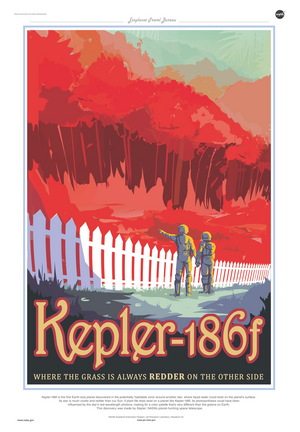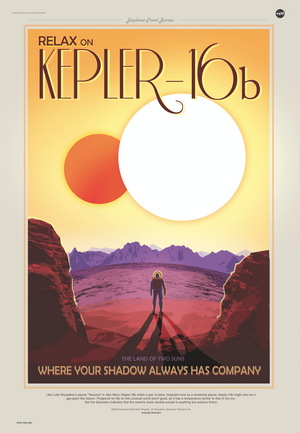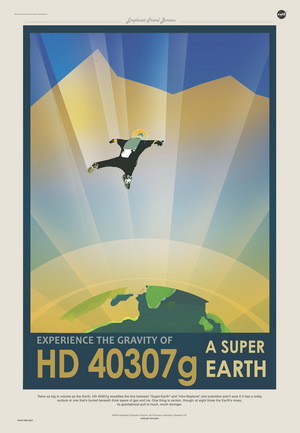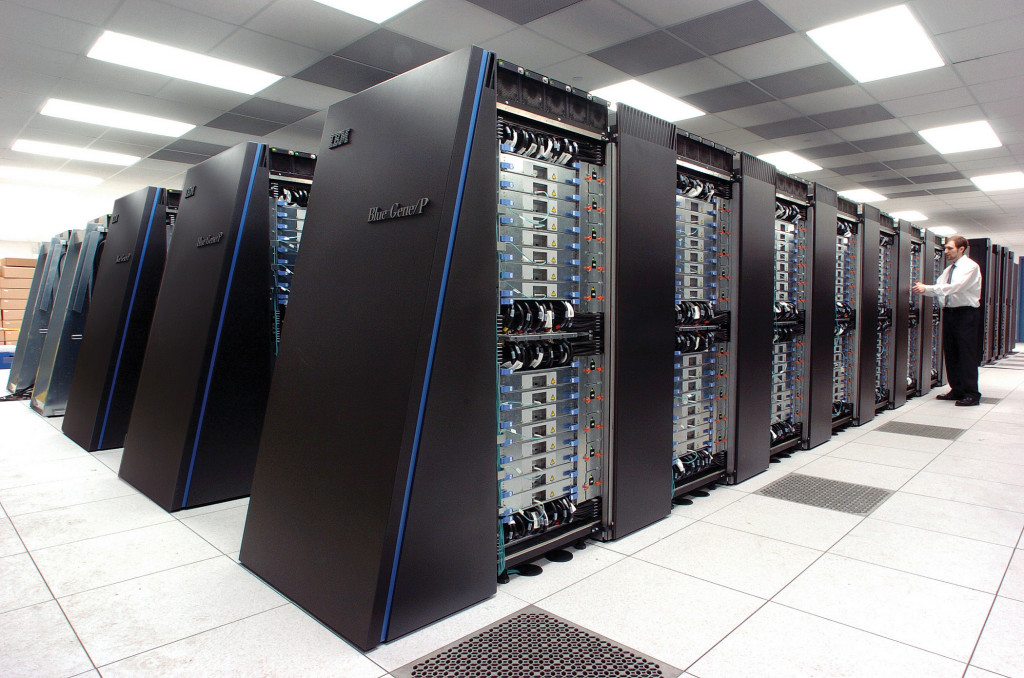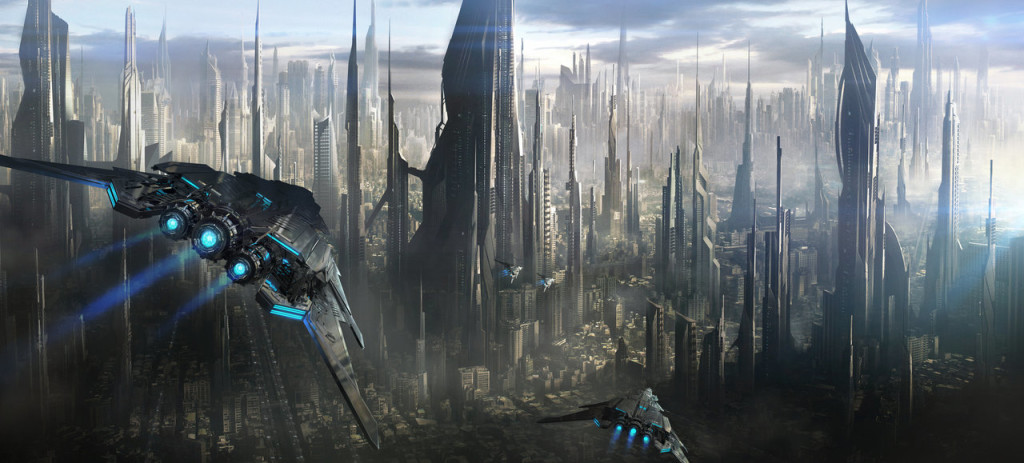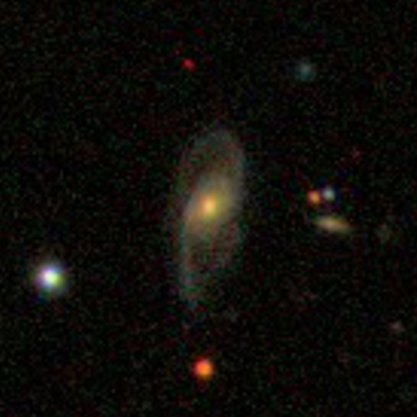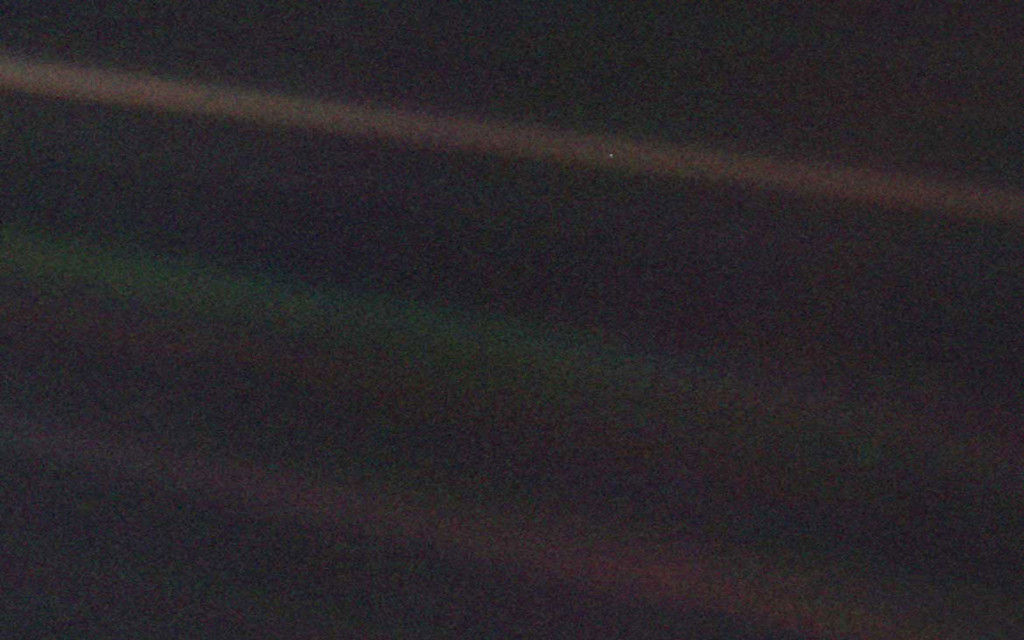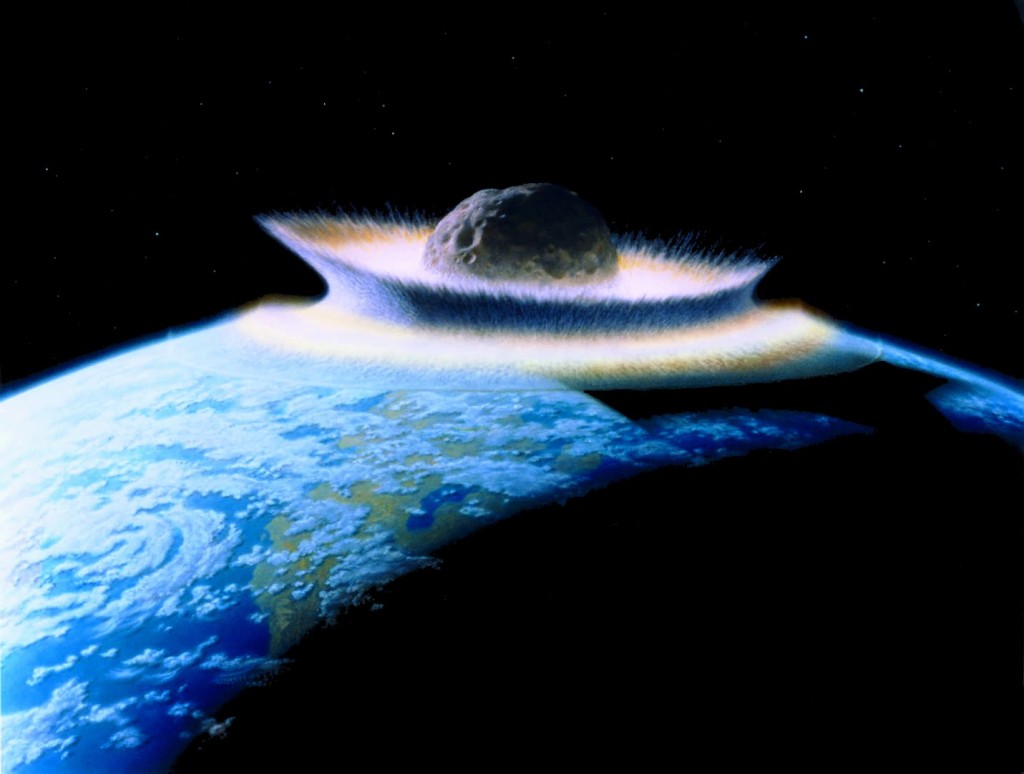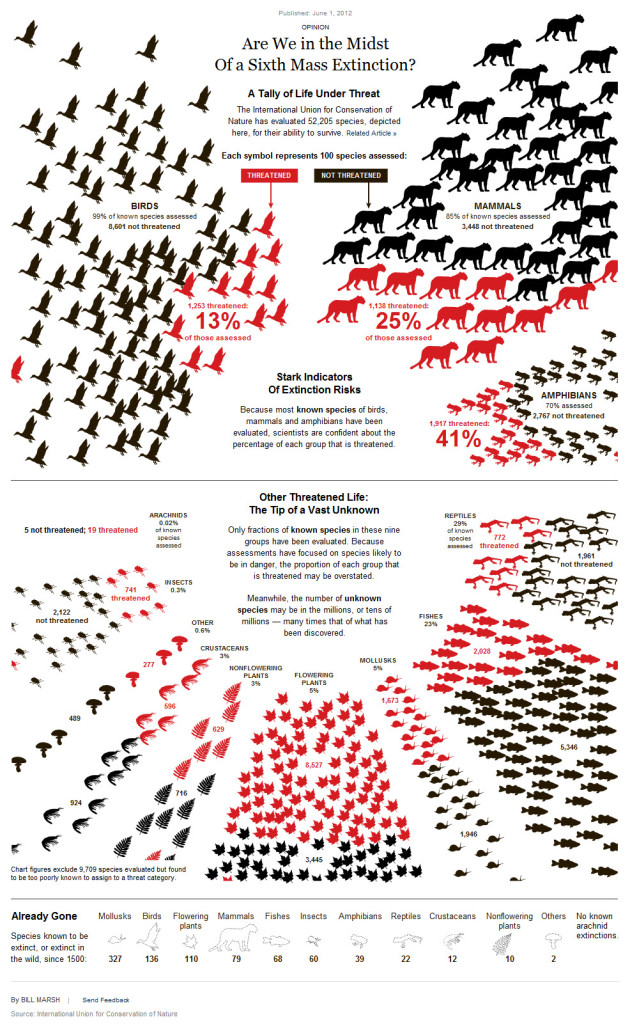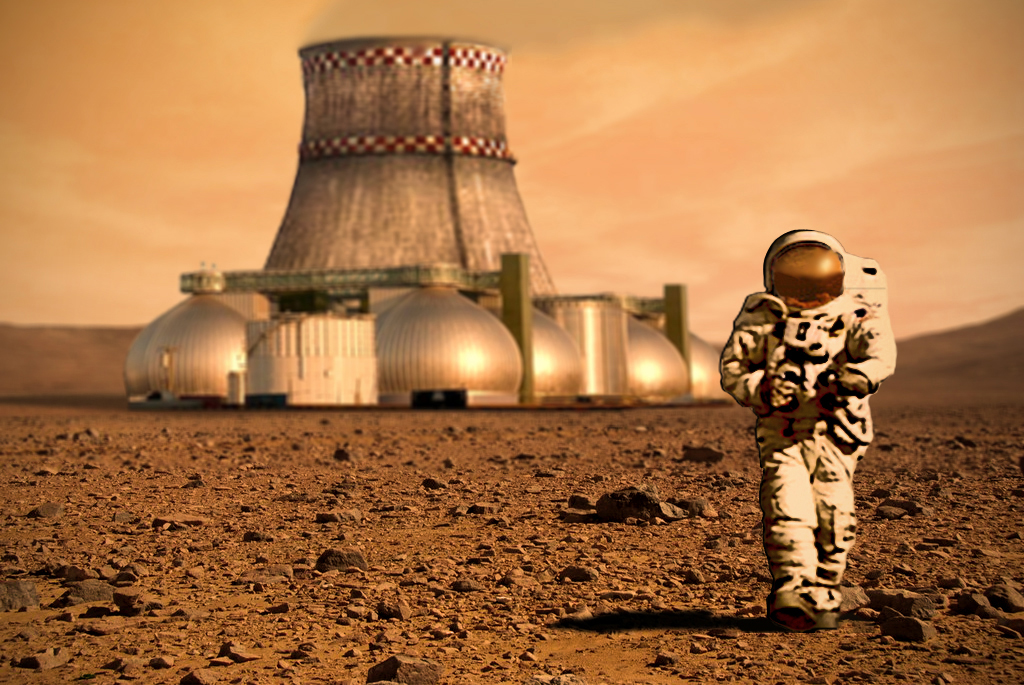-

-

-

-

-

-

-

-

-

-

-
-

-

-

-

-

-

-

-

-

-

-

-

-

-

-

-

-

-

-

-

-

-

-

-

-

-

-

-

-

-

-
-

-

-
 TOTW: Google's Project Ara Modular Phone May Be The Future Of SmartphonesOctober 30, 2014
TOTW: Google's Project Ara Modular Phone May Be The Future Of SmartphonesOctober 30, 2014 -

-

-

-

-

-

-

-

-

-

-

-

-

-

-
-
-

-

-

-

-

-

-

-

-

FFtech
This user hasn't shared any profile information
Posts by FFtech
The Simulation Argument Part #2 – The Hypothesis Explained
010 years
This is the second article in a two-part FFtech series on The Simulation Argument. If you haven’t already read the first article go HERE before reading the following.
In the previous FFtech article on the Simulation Argument, we established that Bostrom’s statement that the first proposition is false is a reasonable assumption. Just to remind you, these are the propositions, and one has to be true:
#1. Civilizations inevitably go extinct before reaching “technological maturity,” the time at which civilization can create a simulation complex enough to simulate conscious human beings. Meaning: no simulations.
#2. Civilizations can reach technological maturity, but those who do have no interest in creating a simulation that houses a world full of conscious humans. Meaning: no simulations. Not even one.
#3. We are almost certainly living in a simulation.
Now, on to the second postulate. Since that we have decided that there are quite likely alien civilizations in the universe that have developed an ability to create “ancestor simulations”, as Bostrom likes to call them, the second postulate says that the alien civilizations just have to interest in creating a simulation of fully conscious human beings. Most likely, a civilization creating a simulation of how humans lived before they reached “technological maturity” will be future humans, as it is less likely that we will have met an alien civilization before develop the capacity to create an ancestor simulation of our own, as the distance from another habitable stars is simply too far away.
(ABOVE: Some very cool illustrations of hypothetical travel ads for habitable planets found with the Kepler satellite)
However the simulation is created, it seems much more likely that at least one alien starts a simulation. If current trends continue, such as the a definitive interest in our ancestors shown in the multitude of historical studies, there will be plenty of people who would like to simulate how their ancestors lived. I know that I would find a simulation of a Greek town fascinating, for example. The idea that not a single person would want to create a simulation seems unlikely, and so therefore the second postulate is likely false.
So, Bostrom’s first postulate is probably false, and the second postulate is just plain unlikely by human (and, more arguably, alien) nature. Based off of that, do we now live in a simulation? Well, not yet. Just because and ancestor simulation exists doesn’t mean that you’re living in it. First, you have to consider the virtual “birth rate” of these simulations. Bostrom also supposes that it takes a lot more effort and time to create a real human than it would a virtual one once a sufficiently advanced technology is developed. Therefore, the ancestor simulation (or simulations) could have many orders of magnitude more virtual humans living inside it then are actual humans, living outside the computer and controlling the simulation. So, if there are thirty virtual humans for every real human, or even numbers up to 1,000 virtual humans to every human, that means the probability that you are one of the few “real” humans rather than a simulated human is very low.
And that, my friends, is the simulation hypothesis.
Of course, there are many assumptions made here, some clear and others subtle, some of which could be used to attack Bostrom’s argument. For instance, one of the major assumptions that Bostrom makes is what he calls “Substrate Independence”. Substrate Independence is the idea that a working, conscious brain can, as he writes in his original paper,
” …supervene on any of a broad class of physical substrates. Provided a system implements the right sort of computational structures and processes, it can be associated with conscious experiences. It is not an essential property of consciousness that it is implemented on carbon-based biological neural networks inside a cranium: silicon-based processors inside a computer could in principle do the trick as well.
Basically, Substrate Independence is the idea that consciousness can take many forms, only one of which is carbon-based biological neural networks. This form of Substrate Independence is pretty hard grasp, which is why Bostrom argues that the full form of Substrate Independence isn’t actually needed for an ancestor simulation. Really, the only form of Substrate Independence needed to create an ancestor simulation is a computer program running well enough to pass the Turing Test with flying colors.
Besides Substrate Independence, most of the rest of the Simulation Argument is fairly simple. Since we have already deduced that there is likely to be at least one ancestor simulation in existence, the likelihood that we are living in that simulation is pretty high. The logic behind this is that the ancestor simulation doesn’t have a set birth rate that can’t be manipulated. The simulation could have as many simulated people in it as they want – though this is stated as obvious, when it is also debatable — and there would be many orders of magnitude more simulated people than actual human people not in a simulation, and even more if there are multiple simulations running at the same time. The present-day parallel is to online video games MMORPGs, which are constantly getting bigger and bigger, with many more characters made in those games than real humans born every second.
Obviously, this argument is very speculative. Substrate Independence, ancestor simulations, the whole thing; it just all seems too far-fetched to be true. And, after all, Bostrom isn’t a computer scientist, he’s works at the Faculty of Philosophy in Oxford. But, that doesn’t mean his argument is false by nature, as in his original paper he goes into incredible detail about computing power, Substrate Independence, and even creates a mathematical formula for calculating the probability we live in a simulation. In fact, if we want to get technical, Bostrom categorizes what I have told you so far as the Simulation Hypothesis, and the full Simulation Argument being the probability equation Bostrom created, some “empirical” facts, and relation to unrefutable philosophical principles. If you want to read Bostrom brilliant albeit a little wordy paper, click HERE.
To sum it up: a man named Nick Bostrom created a series of logical “propositions” that, when examined closely, seem to suggest that there is a very high probability that we are living in a simulation. In fact, the probability is so high that to close his paper, Bostrom writes:
“Unless we are now living in a simulation, our descendants will almost certainly never run an ancestor simulation.”
You may take knowing this however you want. Personally, I think the simulation argument is one of the coolest things to ever come out of philosophy. And if it’s true, that we live in a simulation, that only makes it cooler. After all, we will never know for sure whether we live in a simulation or not, and either way, it doesn’t affect your life the slightest. You have no choice but to continue living your life as you did, maybe in a simulation, maybe not. All this shows is that as technology continues to develop at a rapid pace, we are getting closer and closer to even the wildest of science fiction technologies to become a reality.
Sources: https://www.youtube.com/watch?v=nnl6nY8YKHs http://www.simulation-argument.com/simulation.htmlThe Simulation Argument Part #1 – The First Proposition
010 years
This is the first article in FFtech’s series on The Simulation Argument. Enjoy, and check back for the following articles in the upcoming weeks.
*Warning – the following is incredibly speculative.*
Life seems real, right? This sounds like an obvious statement – of course life is real. That’s what life is. We are living, breathing humans, going about our daily lives, playing our part in the grand theater of life.
Or so we think.
Ok ok, I’ll stop being dramatic. This isn’t what you think; I’m not going to tell you that you’re a reincarnation of a turtle, or that you’re a ghost or spirit. But what I’m going to propose may seem even more preposterous. Brace for it. Ready? Using logical steps, some are arguing that they can prove the likelihood that we are living purely in a simulation is very high.
Whaaaat?? How could we possibly be living in a simulation, with just a bunch of code constituting our entire existence? This idea, famously popularized in the film The Matrix, now has a rigorous scientific argument, created by Nick Bostrom. For Bostrom however, instead of humans being controlled by aliens in a sci-fi thriller, the Simulation Argument conducts a sequence of logical steps in an effort to demonstrate that there is a greater chance than we might think that we are living in a simulation. The argument Bostom put together has three propositions, one of which must be true:
#1. Civilizations inevitably go extinct before reaching “technological maturity,” the time at which civilization can create a simulation complex enough to simulate conscious human beings. Meaning: no simulations.
#2. Civilizations can reach technological maturity, but those who do have no interest in creating a simulation that houses a world full of conscious humans. Meaning: no simulations. Not even one.
#3. We are almost certainly living in a simulation.
Hold it right there, you may be saying. It’s obvious that the first one it true, meaning we couldn’t be able to be in a simulation. That statement, that the first postulate is false, seems logical, but when put through a bunch of philosophical hurdles, doesn’t hold water. The reason that #1 is probably wrong is that the likelihood of sophisticated alien civilizations existing is actually quite high. Although beyond the scope of this article, the vast number of habitable planets, including planets outside of the Habitable Zone but that still may harbor life, is extremely large. Somewhere in the universe, intelligent life must have evolved. Once we have accepted that conclusion, it becomes less likely that this stage of development is unreachable by any one of these civilizations. From an evolutionary perspective, we as humans on Earth are arguably not too far away from being able to simulate a full chemical human mind, and within say 100-1,000 years we may have developed such a simulation similar to the one Bostom is hypothesizing.
One of the main principles of science, as the great Carl Sagan says in his quote The Pale Blue Dot, is the fact that humans on Earth aren’t special, chosen to be the singular life form in the universe. The Milky Way isn’t special at all – quite ordinary among galaxies in fact. If every other alien civilization becomes extinct within 100-1,000 years of our level of technological development, it would certainly make us one very special species. It seems much more likely that at least one civilization, whether it is future humans ourselves or an alien species, develops to this advanced level of sophistication. Thus after some considerable mental wrestling, the first postulate is deemed by Bostom to be most likely false.
But, as even Bostom himself admitted, we don’t have fully sufficient evidence against any of the first two arguments to completely rule them out. There are plenty of theories that favor a hypothetical “Great Sieve”, some event that will happen to every advanced civilization in the universe that drives them to extinction, and that will do the same to us once we reach that stage. Maybe it will be a technology that, once discovered, causes every civilization to ultimately destroy themselves. (e.g., genetic manipulation, nuclear power and weapons, bio-engineering diseases, etc.) The Great Sieve has also been used as an explanation for why there haven’t already detected some type of alien life forms, but the jury is still out on that one. Whatever the Great Sieve may actually be, we still don’t have our complete confidence in saying that the first postulate is 100% wrong. But, in the absence of any conclusive argument for a “Great Sieve”, we will for now follow along with Bostom and say the first postulate should be false.
This is the first big step in the Simulation Argument. The rest of the argument is built upon the idea that alien civilizations could actually develop and use ancestor simulations. This isn’t a small step to make, and it draws in many other philosophical complications, for instance, is creating a conscious computer program as easy as replicating a human brain in code, or is there more to it? I’ll get into this and more in the next installment of FFtech’s Simulation Argument series, so check back soon.
Sources: https://www.youtube.com/watch?v=nnl6nY8YKHs http://www.simulation-argument.com/simulation.html
The Dictionary Of Obscure Sorrows Creates Words For Unnamed Feelings
010 years
The Internet is full of surprises. One of these pleasant oases of intelligence, creativity and artistic genius is the website & YouTube channel The Dictionary Of Obscure Sorrows. The Dictionary Of Obscure Sorrows is a fairly unknown website that posts incredibly inspiring, thoughtful and philosophically profound pieces of writing and video. The great writing, paired with the great editing and unique film work on the channel, makes me surprised this channel isn’t more popular. Started as a website, The Dictionary of Obscure Sorrows is, well, pretty much what it says. Created by John Koenig, a writer and graphic designer, The Dictionary is a collection of words, created by John, that describes emotions, experiences, and sorrows for which there aren’t currently words for where there really should be.
On his journey, John has tackles some philosophically profound topics, leaving you with a sense of wonder that someone could so accurately describe one event or another in your life, and wrap it up in one word. And although the words John creates are just from his mind, and aren’t actual words, I hope writers will start using them, as they seriously need to be integrated into our language. And, if you research a little, you can see that he actually uses other languages, mythology, and more to craft his perspicuous words.
To illustrate that, here are some examples of some words for which he has only written definitions (not created a video) on his website:
Lachesism – n. the desire to be struck by disaster—to survive a plane crash, to lose everything in a fire, to plunge over a waterfall—which would put a kink in the smooth arc of your life, and forge it into something hardened and flexible and sharp, not just a stiff prefabricated beam that barely covers the gap between one end of your life and the other.
Gnossienne – n. a moment of awareness that someone you’ve known for years still has a private and mysterious inner life, and somewhere in the hallways of their personality is a door locked from the inside, a stairway leading to a wing of the house that you’ve never fully explored—an unfinished attic that will remain maddeningly unknowable to you, because ultimately neither of you has a map, or a master key, or any way of knowing exactly where you stand.
Jouska – n. a hypothetical conversation that you compulsively play out in your head—a crisp analysis, a cathartic dialogue, a devastating comeback—which serves as a kind of psychological batting cage where you can connect more deeply with people than in the small ball of everyday life, which is a frustratingly cautious game of change-up pitches, sacrifice bunts, and intentional walks.
As you can see, these words and definitions are truly incredible. They make you think, and in a way you never have before, about your life’s experiences. And the video series that John has created to go along with the website only enhances the experience. With great animation, unique videos and intriguing new ways of filming, The Dictionary Of Obscure Sorrows’ channel and their videos make for an extraordinary experience to watch. Watch the videos above for my favorite of his videos, click HERE to go to his channel, or go HERE to visit his site!
Participate In Scientific Data Collection With Zooniverse
010 years
Analyzing and playing with your data might just be the best part about being a scientist. Once the equipment is set up, and your instrument is ready, the data start streaming in. Whether it’s in the form of pictures, light readings, or a thousand other variables, it’s always exciting to look at the raw material that might help you make a discovery. Unfortunately, this process of combing and sorting through data is often conducted privately. We hear about the discoveries made and the techniques used, but very little about the actual process of examining data and finding the anomaly.
This is where the online project Zooniverse comes in. Zooniverse is a citizen science project, aimed at educating and involving the public in scientific projects. Made available through Zooniverse’s well-designed websites, such as Planet Hunters, Galaxy Zoo, Snapshot Serengeti, Science Gossip and more, Zooniverse allows you to participate in analyzing data from a plethora of different sources, in many different fields such as Physics, Astronomy, Humanities and more. All the websites are share a similar design: you are given an image or set of data on the left-hand side of the screen, and on the right you have a panel to describe that image. After analyzing the image, you can sort it into categories, starting with whether or not the image or data has what the project is looking for. (i.e., an animal in the picture, a transit in the data) Once you have cleared that preliminary hurdle, you can then categorize the data more granularly, further helping the scientists collecting the data reach their goal and make a discovery.
For instance, Galaxy Zoo, a website under Zooniverse’s network, allows you to inspect recent pictures taken from the Sloan Digital Sky Survey, a big astronomical project that is taking pictures of the seemingly black sky and showing that there are actually billions of galaxies hiding there. Using these images of the galaxies, you can categorize them into groups such as spiral, elliptical, merger, and irregular. Not only is this a great way to help scientists test their theories on the commonality of certain types of galaxies, but it’s a great way for the general public to learn astronomy interactively.
Another of Zooniverse’s sites is Science Gossip, a program aimed at documenting and transcribing old field notes and papers from science journals from the1800s to 1900s. On this site, you can flip through pages of old publications such as The Intellectual Observer, The Quarterly Journal Of The Geological Society Of London, The Wiltshire Archeological and Natural History Magazine, and more. If a page has an illustration, table, or chart, you can highlight it, type the caption, and even comment about it on Zooniverse’s built-in social platform. It’s amazing to see the incredible variety of sketches and drawings that are in these journals, as they can range from depiction of dinosaur skeletons, to shells, to geological landscapes.
Overall, Zooniverse is a great way to not only educate the public but also help researchers complete their data collection and categorization in a more precise and timely manner. Often humans are better than computers at categorizing photos and data according to patterns and what’s actually in the photo, so having to public pitch in to help categorize the photos is a great way to get the job done. Plus, I don’t know about you, but I had a blast categorizing far away galaxies and picking out animals from African camera-traps. I definitely recommend you go to Zooniverse and create an account, as even if categorizing galaxies doesn’t fit your tastes, they have a bunch of other projects, such as the ones below:
Galaxy Zoo – Classify galaxy images
Higgs Hunter – Analyze Large Hadron Collider data
Planet Hunters – Analyze Kepler data
Penguin Watch – Categorize penguin camera-trap images
Ancient Lives – Transcribe ancient writing
Chicago Wildlife Watch – Categorize Chicago wildlife camera-trap images
Snapshot Serengeti – Categorize Serengeti camera-trap images
Cell Slider – Analyze Cancer Cells
and more, which you can find on the Zooniverse website! Enjoy!
Are All Animals Doomed For Extinction? Part 4 – Is There Hope?
010 years
This is the final article in FFtech’s De-extinction and Conservation Tech series. To read the first article, go HERE, to read the second article, go HERE, and you can find our most recent article HERE.
So, is there hope for the animals of Earth? That’s the million dollar question. Are an ever-growing number of species ultimately doomed to extinction? While this question may be impossible to answer yet, it is certainly an outcome we all hope to avoid.
In the present, we can do some things to slow the biggest contributors to species extinction such as deforestation and poaching. Efforts are underway in battlegrounds such as the Amazon rainforest to lower the heartless logging of the forests. So much forest is cut down that every second, roughly 36 football fields of trees are destroyed, homes for countless animals, plants, insects, fungi and more amazing life. Also, many efforts to stop poaching of rhinos and elephants in Africa and Asia are taking place, targeting not only the poachers themselves but also the incredibly damaging market for their tusks and horns in China and other countries, leveraging the star-power of local celebrities to amplify the message. Tons of others are chipping in, and yet the trend is still not significantly changing.v
Who am I to say that we’re doomed, though? People have miraculously came together to do great things before, and I’m sure they can do that again for causes like these as well. After all, our animals are what differentiates Earth from some other floating rock out in the Milky Way.
But just stopping this one problem won’t be enough. Overpopulation will drive people into the habitats of more animals. Global warming will continue to melt the ice caps, not only destroying the home of many Arctic and Antarctic species, but causing rising sea levels that threaten to drown countless other animals living near coastlines across the world. Not only do the problems directly relating to animals hurt the chances of the general survival of the Earthen fauna, but other, directly human-caused problems do too. If we are going to be saved by some miracle technology that stops global warming, and the global population levels out, so be it. To be honest, I highly doubt that will happen. At least for many of these problems, humanity will have to exercise its altruistic muscles, and see if we can fix what wrongs the rise of homo sapiens has brought upon the natural world. As interesting as I find the fields cosmology and astronomy, at least an equal amount of eyes and money should be spent studying the fragile ecosystems of the great world we live on, rather than already looking forward to abandoning this planet for another one that is probably not as unique and fascinating as the one we already live on.
“Look again at that dot. That’s here. That’s home. That’s us. On it everyone you love, everyone you know, everyone you ever heard of, every human being who ever was, lived out their lives. The aggregate of our joy and suffering, thousands of confident religions, ideologies, and economic doctrines, every hunter and forager, every hero and coward, every creator and destroyer of civilization, every king and peasant, every young couple in love, every mother and father, hopeful child, inventor and explorer, every teacher of morals, every corrupt politician, every “superstar,” every “supreme leader,” every saint and sinner in the history of our species lived there-on a mote of dust suspended in a sunbeam.
The Earth is a very small stage in a vast cosmic arena. Think of the endless cruelties visited by the inhabitants of one corner of this pixel on the scarcely distinguishable inhabitants of some other corner, how frequent their misunderstandings, how eager they are to kill one another, how fervent their hatreds. Think of the rivers of blood spilled by all those generals and emperors so that, in glory and triumph, they could become the momentary masters of a fraction of a dot.
Our posturings, our imagined self-importance, the delusion that we have some privileged position in the Universe, are challenged by this point of pale light. Our planet is a lonely speck in the great enveloping cosmic dark. In our obscurity, in all this vastness, there is no hint that help will come from elsewhere to save us from ourselves.
The Earth is the only world known so far to harbor life. There is nowhere else, at least in the near future, to which our species could migrate. Visit, yes. Settle, not yet. Like it or not, for the moment the Earth is where we make our stand.
It has been said that astronomy is a humbling and character-building experience. There is perhaps no better demonstration of the folly of human conceits than this distant image of our tiny world. To me, it underscores our responsibility to deal more kindly with one another, and to preserve and cherish the pale blue dot, the only home we’ve ever known.”
– Carl Sagan
Thanks for sticking with me through this whole conversational journey! If you want to check out the first, second and third articles in the series, go HERE.
Sources: http://www.biologicaldiversity.org/programs/biodiversity/elements_of_biodiversity/extinction_crisis/ http://wwf.panda.org/about_our_earth/biodiversity/biodiversity/ http://www.nature.com/news/2011/110823/full/news.2011.498.htmlAre All Animals Doomed For Extinction? Part 3 – Noah’s DNA Ark
010 years
This is the third installment in Fast Forward’s De-extinction & Conservation tech series. For the first article, click HERE, and to read the second article, go HERE.
What happens if we can’t stop the demise of a rising share of Earth’s species? What if, in a worst-case scenario, we actually can’t halt the extinctions? While clearly an extreme case scenario, if the conservation techniques discussed in the previous articles in this series fail, this outcome starts to become worthy of contemplation. Most likely, habitat destruction would be the cause of accelerating extinctions, and with fewer habitable ecosystems, utilizing frozen tissue samples (see second article) to relocate populations to new locales may become one of our only options. This is clearly speculative, but as animals all over the world are losing their homes by the day, it may not be as far off as we hope.
An alternative hope could be rapidly developing technologies such as 3D printing. With a strong library of species DNA, we could potentially “3D-print animals” to populate whatever space we find for them. Problems are many, including technical obstacles as well as the lack of adequate DNA samples to restore balanced ecosystems. That’s where, and I’m surprised I have to say this, the Russians come in.
Russia has granted Moscow State University their second biggest scientific grant ever on a project called “Noah’s Ark”, which is essentially a giant databank consisting of DNA from every single living and near-extinct species. That is a heck of a big job, but apparently the Russians are ready to take it head on. “It will enable us to cryogenically freeze and store various cellular materials, which can then reproduce. It will also contain information systems. Not everything needs to be kept in a petri dish,” said MSU rector Viktor Sadivnichy.
The physical building designed to house the DNA library is set to be completed in 2018, with its gigantic size reflecting the magnitude of the task at hand. The university’s incredible task could take decades: there are estimated to be 8.7 million species, with an estimated 86% of land species and 91% of all marine species yet to be discovered. At the current rate of field taxonomy, we would only have discovered every species on Earth in more than 400 years. So even if the scientists can manage to sample a good majority of the species out there that we have found, they will have a long way to go before taking a full backup of Earth’s genetic data.
This is the third installment in the four-part series on De-Extinction & Conservation tech. Check back here soon for the last article in the series!
Sources: http://rt.com/news/217747-noah-ark-russia-biological/ http://www.nature.com/news/2011/110823/full/news.2011.498.html http://www.nydailynews.com/news/world/russia-build-noah-ark-world-dna-databank-article-1.2059704
Are All Animals Doomed to Extinction? Part 2: The Frozen Zoo
010 years
This is the second in my series on de-extinction technology, the increasing rate of animal extinction, and more. Click HERE to read the first article.
To start, I’ll tell you the first of humanity’s hopes for the survival of Earth’s fauna: a genetic sampling collection, or in the words of the San Diego Zoo, a “Frozen Zoo.” The reason I mentioned Angalifu, the late white rhino from the San Diego Zoo, in Part 1 of this series is because the rhino is now part of an incredible task being undertaken: creating a frozen collection of any animal that dies at the Zoo, including tissue, sperm/eggs, stem cells, and anything else that may be useful for later use. They have been doing this for 40 years already, and have amassed so much genetic data that the Zoo now represents the largest frozen gene bank in the world, including rare samples such as the white rhino’s.
This technique holds great promise, one of which is cloning or bringing a species back to life; however, creating one or two of these rhinos or Po’ouli birds isn’t what scientists are trying to achieve. The goal is rather to get these animals back into the wild as part of a stable population. But, when the animals that are “created” are the only ones that can repopulate the whole rhino species, that can lead to genetic complications, such as inbreeding. Yet many other species have come back from a very small population, so if we can someday produce a large handful of genetically distinct white rhinos (i.e., not clones of one or two individuals) then there is a chance that they could grow their population back up to a stable point in the wild.
Even after this major technical hurdle is cleared, another key obstacle would be to avoid the poaching that prompted the fall of this great species in the first place, but that’s a story for another day. Yet for now, poaching does raise a new point, and one that hurts the case for all of the Jurassic Park fans who want pet velociraptors (or perhaps more realistically, pet Dodo birds): where would we put these animals, and how would they get re-introduced into the modern ecosystem that has already adapted to life without them?
The short answer is: they can’t really. After an ecosystem has gone so long without a certain species, reintroducing the species back to the wild risks disrupts the new harmony, and may even make the reintroduced species act as an invasive species. As our goal is to keep our environment as harmonic as possible, disrupting that just because Velociraptor African safaris make great business hopefully won’t happen anytime soon.
What I’m trying to say is that the goal of all this time and money invested in this cause is not to bring back extinct species, but rather to bring back extant species that are hovering on the brink of extinction, such as the white rhino. The species the scientists are targeting have only just vacated their natural habitats, preferably due to unfortunate human eradication, as those are the species where we have a clearer moral obligation to try to intercede. Bringing these species back to a stable population, which has been completed before with various raptor species and others, is the goal of all this hard work from many talented people.
Make sure to check back here soon for the last two installments in this series!
Are All Animals On Earth Doomed For Extinction? – Part 1
010 years
Back in December, at the San Diego Zoo, a 44-year-old white rhinoceros named Angalifu died. Angalifu was one of the last five white rhinoceroses in the world, and unfortunately, each of the remaining four is unable to reproduce. What does that mean? Well, for now it means that the white rhinoceros is doomed to extinction, at least in its original state.
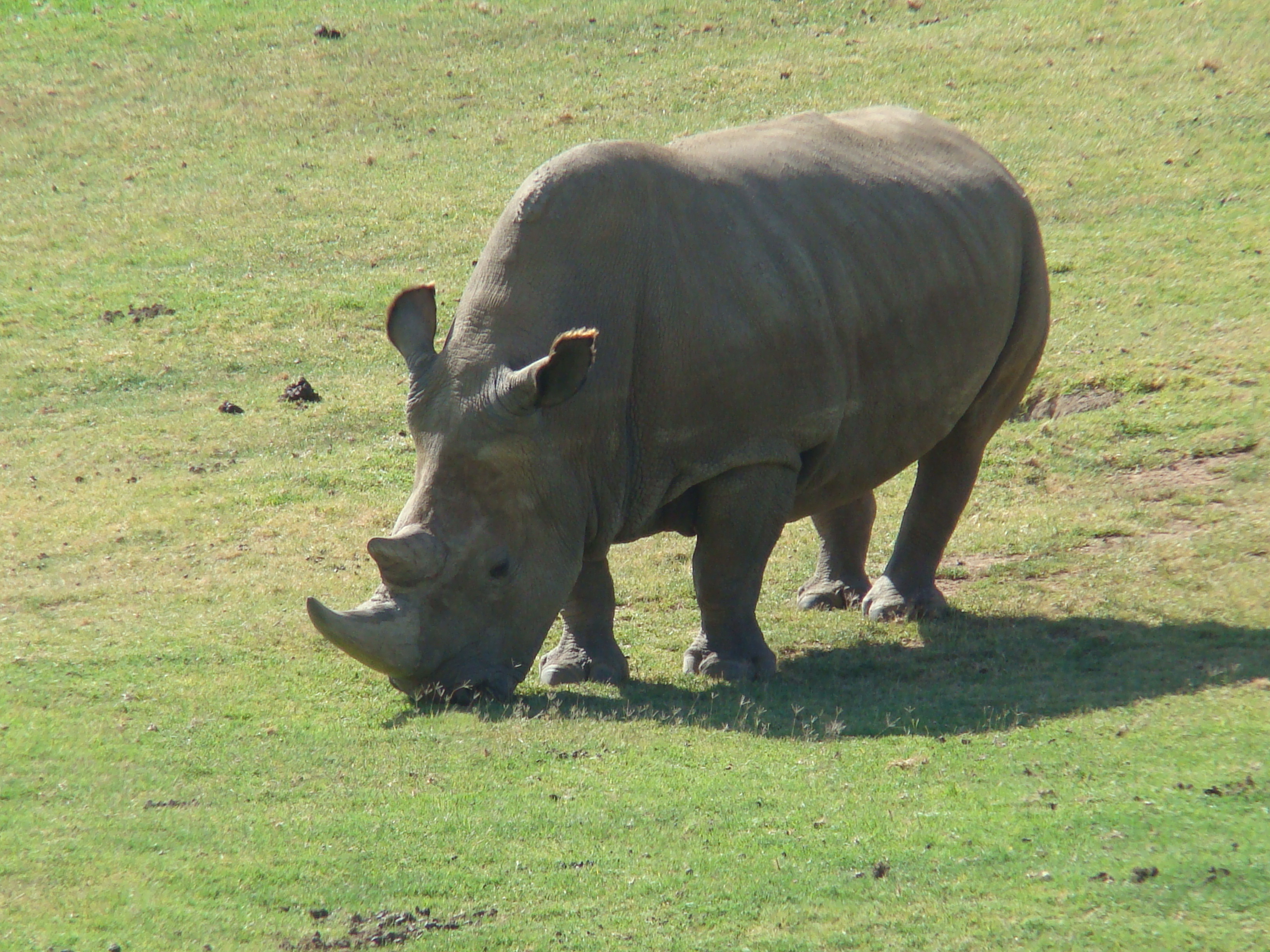
Angalifu, the late White Rhino.
This isn’t something new. It is hard to know what share of species goes extinct each year, as we don’t even know how many species there are on our wonderful planet. Science’s best estimates are that we lose roughly 0.01% to 0.1% of our species annually, which doesn’t seem that drastic at first, but actually translates to an estimated 10,000 to 100,000 species per year. 100,000! Never should the highlight of a year be a picture of Kim Kardashian on a magazine rather than the incredible amount of animals that died off in that year. In fact, extinction rates are so high, 1,000% to 10,000% higher than past non-altered extinction rates, that many are calling this episode the sixth mass extinction of all time. Keep in mind that historically, a mass extinction has been an asteroid slamming into the Earth. That’s not something we as humans want to emulate, and yet, we are heading toward that magnitude of an event faster than ever, with no real plan to stop it. Of course, we aren’t there just yet. It is estimated that by mid-century 30% to 50% of all species on Earth will go extinct, rivaling both the Triassic/Jurassic extinction and the Late Devonian mass extinction, considered two of the five biggest mass extinctions of all time. We are clearly at a point that we have to start doing something; a third of all amphibians are already going extinct, at a rate of 25,000-45,000 times the background or normal extinction rate. Even primates, our closest relative on this planet, have 50% of their population at risk of extinction. We aren’t on a good path here.
I’m not writing this just to depress you, though. We do have some hope, if not a way to stop the ultimate demise of much of the life on earth. As much as I wish it weren’t true, there is most likely no economical way to halt the pace of the industrial growth that is compromising our natural resources and habitats. Based on persistent long-term trends, it appears that sooner or later we will all be living in an urban or suburb environment (or a dustbowl, if you are Matthew McConaughey), and the associated environmental damage will be very hard to reverse. But this doesn’t mean that the affected species can’t come back from the dead. Although we aren’t exactly there yet, with a failed try at bringing an extinct species bucardo (a type of Spanish Ibex) back to life ending in a deformed baby dying soon after birth, we are getting extremely close. We all know that Jurassic Park is a fiction, as even the more recent Woolly Mammoth is too far back in time to clone. But, there are plenty of recently extinct species that are well on their way to being cloned, such as the Hawaii Po’ouli bird and more. This may be commonplace in the future, the cloning and repopulation of dying species. Earth’s animals are precious and define our planet; we want to protect them from our destructive impact for as long as we can. This is the first part in a 4 part series on de-extinction, increasing extinction rates, conservation technology and more. Check back the next installment in the series soon!
Sources: http://wwf.panda.org/about_our_earth/biodiversity/biodiversity/ http://www.biologicaldiversity.org/programs/biodiversity/elements_of_biodiversity/extinction_crisis/ http://www.bbc.co.uk/nature/extinction_events http://ngm.nationalgeographic.com/2013/04/125-species-revival/zimmer-text http://www.nature.com/news/2011/110823/full/news.2011.498.htmlVideos Of The Week – Robots, Time Travel and More
010 years
#1. Humans Need Not Apply
Created by the analytical and political master of Youtube, CGP Grey, Humans Need Not Apply is an admittedly terrifying and incredibly interesting video on how humans are doomed to be one day pushed out of the way by robots. We don’t recognize it now, as the best robots we have currently rely on heavily depend on human control and monitoring. But as AI advances, there may become a point in time where robots are just more useful that humans in every field. And as CGP Grey explains, with an analogy of horses, that’s not necessarily a good thing. There may become a time, in the far off future, where we become something resembling…
The Borg. *shudder*
(just a joke for all you Star Trek fans out there)
But seriously, as CGP Grey points out, we have to prepare for what’s to come. And with technology increasing in quality and power so rapidly, that time may be something we don’t have. Forty years ago, computers didn’t even exist in any useful consumer form; forty years from now, who knows where humans and computers will stand?
#2. Three Time Travel
Have you ever wanted to time travel? To unwind some previous mistakes, or just out of curiosity? If you said yes, I know you’re not alone, and if you said no… stop lying.
But seriously, time travel is one of the most used science fiction cliches, and yet no matter how many blockbuster movies continue to use this trope, nobody can get enough of it. Unfortunately, there are many paradoxes that happen easily when one time travels, such as the Grandfather Paradox and more. In this Vsauce3 video, Jake (not from State Farm, but from Vsauce2) cleverly weaves many of these philosophical paradoxes about time travel into one video, all the while the video *spoiler alert* is a paradox itself. The main point that I drew from this video, although it has many, is: as much as you would like to go back in time to tell yourself to shave off that ridiculous mustache, or to give yourself the answer to a important test, or not to wear that shirt to the interview, it not only is not possible but also a really bad idea. Plus, Bill Nye has a cameo. That guarantees it’s good.
#3. Where’s Our Future Technology
Why don’t we have flying cars, moon colonies or hoverboards yet? No, seriously. For many decades, these future technologies have been promised, and the age old “In 20 years that technology will be common.” saying has been used over and over. Why haven’t these technologies actually become common, or at least possible? Well, there are multiple reasons, and it really depends on what tech you’re talking about. For instance, a moon colony may very well be possible sometime around 2030, but flying cars just don’t work in many different ways, including safety and logistics as two examples. But, there are many more technologies that we all have inside secretly been hoping for (like teleportation!) that Kevin from Vsauce2 explains in this great video.
And hey, another Vsauce video with a cameo by Bill Nye! Awesome! (and hey, even though he’s only on camera for 10 seconds in this one, just his being there makes the video seem all the more reputable)
If you like these videos, and want more of videos of this quality, check out Video Shakedown! Run by the people behind FFtech, Video Shakedown features the best videos from around the internet every day. Click HERE to go to videoshakedown.com!
Mars One Plans For Humans Colonizing Mars By 2024
010 years
Have you ever wanted to go to Mars? To set foot on a new planet, being one of the first humans ever to do so? It really does sound like a stretch of the imagination, and still doesn’t seem possible, even with a reasonable amount of knowledge about what it will take to get there. There are just so many hurdles to creating an actual Mars colony: food, solar radiation, the effect of less gravity on our bones, the cost of transporting supplies to space, and much more. Learn more about it in the Asap Science video below:
And yet, a non-profit organization called Mars One is already making plans to go there. Setting their sights on a manned Mars mission in 2024 and then again in 2026, Mars One has already been supported by many experts, including Nobel Physics prize-winner Gerard ‘t Hooft, along with the 200,000 other people wanting to be one of the 24 lucky (or unlucky, depending on how you view it) to go to Mars. Announced in 2012, Mars One has already gone through three stages of elimination for picking who will be an astronaut in the final takeoff. Recently, 100 people were announced as in one of the last groups before Mars One picks the final 24. Each applicant paid $38 and submitted a video and written summary of why they want to go to Mars, why they deserve it, and what makes them good to spend the rest of their life up there. (no attachments, good personality, etc.)
And notice I’ve said “the rest of their life up there”. That wasn’t just a guess. Mars One has made it very clear that these participants are going up on the red planet and staying there. Either they fail on the way up and die, or stay up there for the rest of their life, the first generation of a martian colony. And everyone in the top 100 applicants have accepted that too, which adds just one more level of bravery on top of the whole idea of a possibility of being incinerated while leaving the atmosphere.
One criticism of Mars One is how they’re running the whole enterprise. Many people have voiced that they believe Mars One is taking the process much too lightly, and the fact that they are creating a reality television show isn’t sitting well with many people. On their website they already are letting people vote for the “contestants” they want to go to the next round of elimination. Sounds a lot more reality TV than NASA, and that’s exactly what people are worried about. This would be a very dangerous mission, and taking unqualified people and throwing them into space for the sake of entertainment clearly doesn’t seem right.
Unfortunately, the reality TV part of their elimination process has already taken hold on many people, with The Guardian, Ars Technica and more doing interviews with some of the final round applicants. But there is an upside to the reality TV aspect, and that’s the money Mars One will make. They have already estimated the cost be to $2 billion, and so the show would help pay for the technology, rockets, and to help if anything goes wrong.
And who knows? Maybe, by some near-miracle, Mars One will have the required technology to launch the final 24 applicants into space and then on to Mars by their target date. Then, of course, the question would be how they would actually survive in space, and what humanity would do with a Mars colony, but that’s a thought for another time.
UPDATE: PBS Idea Show just created a great video on the entertainment aspect of Mars One, which you can watch below.
